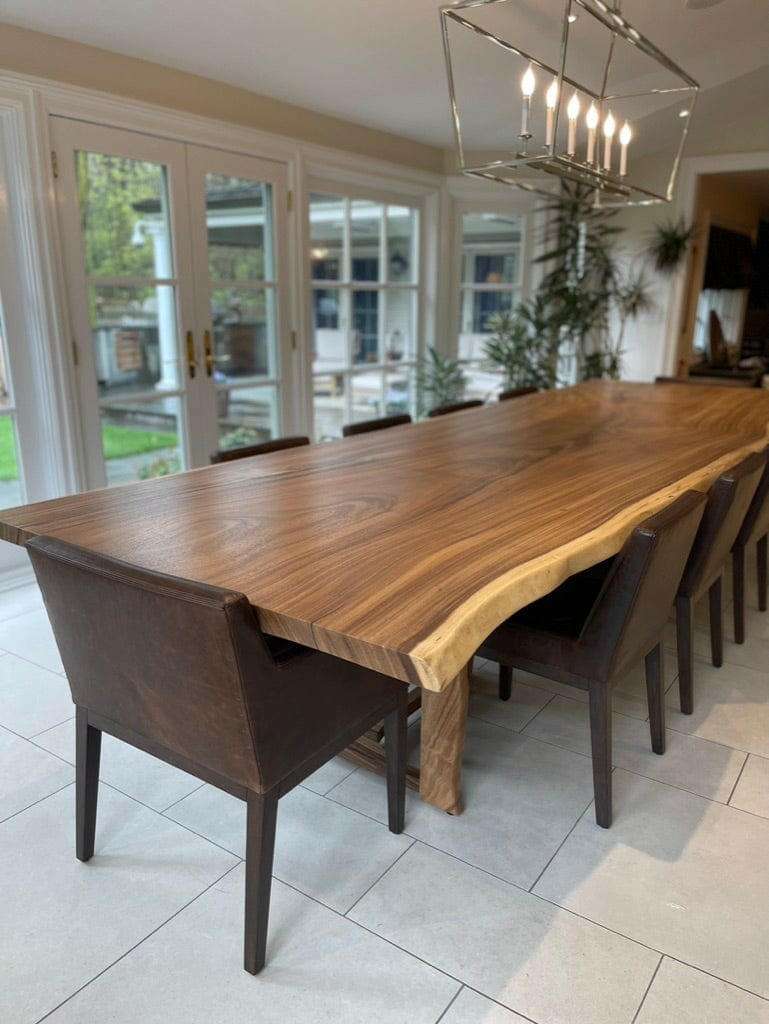Dining Room Table Legs That Integrate Performance and Modern Style
Dining Room Table Legs That Integrate Performance and Modern Style
Blog Article
A Comprehensive Consider Eating Table Leg Styles: Discovering the Ideal Match
Choosing the appropriate dining table leg design is essential for both visual charm and sensible functionality. For those with bigger tables, trestle legs ensure strong assistance, whereas hairpin legs present a mid-century modern-day vibe with their minimalist layout. The x-shaped legs blend contemporary design with boosted stability.
Typical 4 Legs
Amongst the numerous kinds of eating table leg styles, the conventional four-leg style remains a timeless choice for many homes. Four legs provide well balanced assistance, making sure the table stays steady and capable of birthing significant weight (dining room table legs).
From an aesthetic perspective, the traditional four-leg layout can be conveniently adapted to various indoor designs. Whether crafted from wood, steel, or a mix of materials, these legs can be intricately sculpted, smooth and minimalistic, or anything in between. Their versatility permits them to match both rustic and contemporary setups effortlessly.
Furthermore, the straightforward framework of the four-leg style facilitates convenience of movement and positioning within a space. Unlike more complicated bases, this style decreases obstructions, giving adequate legroom for diners. In recap, the conventional four-leg table leg style weds withstanding style with functional functionality, making it a sharp choice for those looking for both form and function in their eating furniture.
Stand Base
Typically commemorated for its stylish and space-efficient layout, the pedestal base is a notable alternative to the typical four-leg configuration in table leg designs. This unique base commonly features a single central column sustaining the tabletop, which can vary in kind, from ornately carved wood to streamlined, modern metal. Among the key advantages of the stand base is its capacity to maximize legroom and seating adaptability. Without corner legs, restaurants are afforded better liberty of movement, making it a perfect option for round and oblong tables that advertise more intimate and inclusive gatherings.
The central column itself offers a canvas for detailed styles and artistic expressions, including an aspect of aesthetic rate of interest below the table. In recap, the pedestal base combines capability with style, making it an improved and functional option for varied dining settings.
Trestle Legs
Trestle legs offer a robust and timeless foundation for dining tables, identified by their straight cross-bracing and tough assistance beams. Stemming from medieval times, this layout has progressed yet kept its important framework, making it a perennial fave in both traditional and modern settings. The central trestle light beam, typically sustained by two or even more vertical messages, supplies extraordinary security, enabling bigger table lengths without the requirement for added legs.
A significant benefit of trestle leg tables is the ample legroom they provide. Unlike tables with 4 edge legs, the absence of blockages at the table's sides provides unobstructed room for chairs and diners, enhancing convenience and access. This makes trestle tables perfect for suiting bigger gatherings, whether in a dining-room or a reception hall.
From rustic farmhouse to smooth modern-day layouts, trestle legs can be tailored to suit individual tastes. Their long-lasting appeal and functional advantages make trestle legs an engaging selection for those looking for both design and usefulness in their eating table.
Barrette Legs

The charm of barrette legs hinges on their simpleness and versatility - dining room table legs. Available in a series of products, including steel and brass, they can be finished in countless colors to match different interior styles. Whether coupled with a rustic wood tabletop or a contemporary glass surface area, barrette legs easily mix performance with a touch of vintage beauty
Durability is one more notable feature of barrette legs. Despite their delicate appearance, these legs are crafted to birth significant weight, ensuring the table stays steady and safe and secure. In addition, they are relatively easy to install, making them a popular option for DIY lovers and expert furnishings manufacturers alike.
X-Shaped Legs

Constructed from materials such as steel, wood, or a combination of both, X-shaped legs can be customized to match various layout preferences. Steel legs commonly lend a smooth and commercial feel, suitable for loft-style homes and modern eating rooms. On the other hand, wooden X-shaped legs use a warmer, more rustic charm, appropriate for farmhouse or diverse interiors. The adaptability in products permits property owners to personalize their table to better fit their overall style plan.
Furthermore, the engineering behind X-shaped legs makes sure also weight circulation, decreasing the threat find more of tottering and boosting resilience. This makes them particularly appropriate for larger dining tables that require additional support. In essence, X-shaped legs blend useful engineering with modern aesthetic appeals, making them an ageless option for diverse dining environments.
Conclusion
A comprehensive understanding of dining table leg designs discloses the distinctive features and advantages of each style. Standard four legs provide stability and classic charm, while pedestal bases provide legroom and a structured look. Trestle legs make sure robust support for bigger tables, and barrette legs introduce a mid-century modern visual. X-shaped legs incorporate modern design with enhanced security. Choosing the suitable leg design makes certain Extra resources both practical and aesthetic satisfaction in any kind of eating space.
Report this page